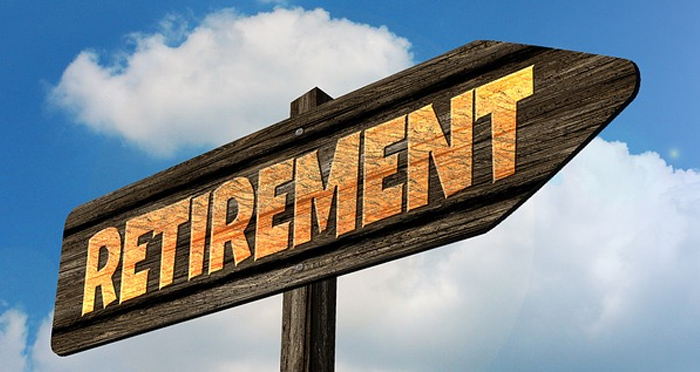More women are working and taking charge of their own retirement planning than ever before. What does retirement mean to you? Do you dream of traveling? Pursuing a hobby? Volunteering? Enjoying more time with your grandchildren? Whatever your goal, you’ll need a retirement income plan that’s designed to support the retirement lifestyle that you envision, and minimize the risk that you’ll outlive your savings.
When will you retire?
Establishing a target age is important, because when you retire will significantly affect how much you need to save. Consider these points:
• The longer you delay retirement, the longer you can build up tax-deferred funds in your IRA or 401(k).
• Medicare generally doesn’t start until you’re 65. You may have to look into COBRA or a private individual policy — which could be expensive.
• You can begin receiving your Social Security as early as age 62; however, your benefit may be 25 to 30 percent less than if you waited until full retirement age. Conversely, if you delay retirement past full retirement age, you may be able to increase your Social Security retirement benefit.
• If you work part-time during retirement, you’ll be earning money and relying less on your retirement savings, leaving more of your savings to potentially grow for the future.
• If you’re married, think about staggering your retirements. If one spouse is earning significantly more than the other, then it usually makes sense for that spouse to continue to work in order to maximize current income and ease the financial transition into retirement.
How long will retirement last?
We all hope to live to an old age, but a longer life means that you’ll have even more years of retirement to fund. The problem is particularly acute for women, who generally live longer than men. There’s no way to predict how long you’ll actually live, but with life expectancies on the rise, it’s probably best to assume you’ll live longer than you expect.
Estimate your retirement expenses
It’s often said that you’ll need 70 to 80 percent of your pre-retirement income after you retire. However, everyone’s situation is different. Focus on your actual expenses today and think about whether they’ll stay the same, increase, decrease, or even disappear by the time you retire. While some expenses may disappear, other expenses, such as health care and insurance, may increase as youage. Be sure to factor in travel and hobby expenses, and don’t forget the impact of inflation and taxes.
Identify your sources of income
You may have a traditional pension or Social Security to provide a portion of your retirement income. Other sources may include a 401(k), IRA, annuity, and other investments. The amount of income you receive from those sources will depend on the amount you invest, the rate of investment return, and other factors. You may also choose to work during retirement. When you compare your projected expenses to your anticipated sources of income, you may find that you won’t have enough to meet your needs. Closing this difference, or “gap,” is an important part of your retirement income plan. In general, if you face a shortfall, you’ll have five options: save more now, delay retirement or work during retirement, try to increase the earnings on your retirement assets, find new sources of retirement income, or plan to spend less during retirement.
Transitioning into retirement
Even after that special day comes, you’ll still have work to do. You’ll need to carefully manage your assets so that your retirement savings will last as long as you need them to.
• Review your portfolio regularly. Some people shift their investment portfolio to fixed income investments, such as bonds and money market accounts, as they enter retirement. The problem with this approach is that you’ll effectively lose purchasing power if the return on your investments doesn’t keep up with inflation. While it generally makes sense for your portfolio to become progressively more conservative as you grow older, it may be wise to consider maintaining at least a portion in growth investments.
• Spend wisely. You want to be careful not to spend too much too soon. This can be a great temptation, particularly early in retirement. A good guideline is to make sure your annual withdrawal rate isn’t greater than 4% to 5% of your portfolio. Remember that if you whittle away your principal too quickly, you may not be able to earn enough on the remaining principal to carry you through the later years.
• Consider which assets to use first. The answer is simple in theory: withdraw money from taxable accounts first, then tax-deferred accounts, and lastly, tax-free accounts. By using your tax-favored accounts last and avoiding taxes as long as possible, you’ll keep more of your retirement dollars working for you. However, this approach isn’t right for everyone. And don’t forget to plan for required distributions. You must begin taking minimum distributions from retirement plan when you reach age 70½, whetheryou need them or not.
Unfortunately, there’s no one-size-fits-all when it comes to retirement income planning. We can review your circumstances, help you sort through your options, and help develop a plan that’s right for you.
Investment Advisory Services offered through Raymond James Financial Services Advisors, Inc. Zivney Financial Group is not a registered broker/dealer, and is independent of Raymond James Financial Services.
by Linda Zivney CRPC of Zivney Financial Group
Registered Principal
541-330-7590
25 NW Irving Ave, Bend
www.zivneyfinancialgroup.com




